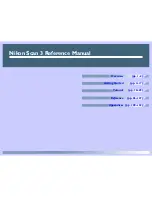
Adobe Acrobat SDK
Implementation Notes
Adobe® Supplement to the ISO 32000
Implementation Notes to the PDF Reference, sixth edition 128
10.10.1 Page Boundaries
167. Acrobat provides various user-specified options for determining how the region specified by the crop
box is to be imposed on the output medium during printing. Although these options have varied from
one Acrobat version to another, the default behavior is as follows:
1. Select the media size and orientation according to the operating system’s Print Setup dialog.
(Acrobat has no direct control over this process.)
2. Compute an effective crop box by clipping it with the media box and rotating the page according to
the page object’s
Rotate
entry, if specified.
3. Center the crop box on the medium, rotating it if necessary to enable it to fit in both dimensions.
4. Optionally, scale the page up or down so that the crop box coincides with the edges of the medium
in the more restrictive dimension.
The description above applies only in simple printing workflows that lack any other information about
how PDF pages are to be imposed on the output medium. In some workflows, there is additional
information, either in the PDF file (
BleedBox
,
TrimBox
, or
ArtBox
) or in a separate job ticket (such as
JDF or PJTF). In these circumstances, other rules apply, which depend on the details of the workflow.
Consequently, it is recommended that PDF files initially be created with the crop box the same as the
media box (or equivalently, with the crop box omitted). This ensures that if the page is printed on that
size medium, the crop box coincides with the edges of the medium, producing predictable and
dependable positioning of the page contents. On the other hand, if the page is printed on a different
size medium, the page may be repositioned or scaled in implementation-defined or user-specified
ways.
10.10.4 Output Intents
168. Acrobat viewers do not make use of the “to CIE” (AToB) information in an output intent’s ICC profile.
169. Acrobat 5.0 does not make direct use of the destination profile in the output intent dictionary, but
third-party plug-in extensions might do so. Acrobat 6.0 does make use of this profile.
10.10.5 Trapping Support (Trap Network Annotations)
170. Older viewers may fail to maintain the trap network annotation’s required position at the end of the
Annots array.
171. Older viewers may fail to validate trap networks before printing.
172. In Acrobat 4.0, saving a PDF file with the Optimize option selected causes a page’s trap networks to be
incorrectly invalidated even if the contents of the page has not been changed. This occurs because the
new, optimized content stream generated for the page differs from the original content stream still
referenced by the trap network annotation’s
Version
array. This problem has been corrected in later
versions of Acrobat.
10.10.6 Open Prepress Interface (OPI)
173. The Acrobat 3.0 Distiller application converts OPI comments into OPI dictionaries. When the Acrobat
3.0 viewer prints a PDF file to a PostScript file or printer, it converts the OPI dictionary back to OPI
comments. However, the OPI information has no effect on the displayed image or form XObject.
174. Acrobat viewer and Distiller applications earlier than version 4.0 do not support OPI 2.0.













































